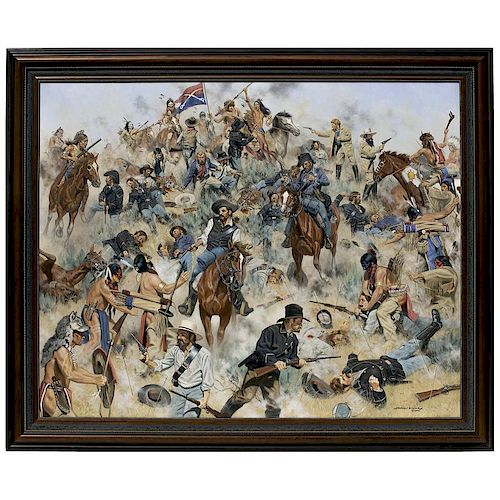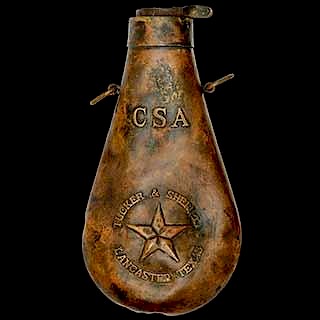Oil Painting "With Their Boots On" By Michael Schreck
About Seller
6270 Este Ave.
Cincinnati , OH 45232
United States
With offices in Cincinnati, Cleveland and Denver, Cowan’s holds over 40 auctions each year, with annual sales exceeding $16M. We reach buyers around the globe, and take pride in our reputation for integrity, customer service and great results. A full-service house, Cowan’s Auctions specializes in Am...Read more
Two ways to bid:
- Leave a max absentee bid and the platform will bid on your behalf up to your maximum bid during the live auction.
- Bid live during the auction and your bids will be submitted real-time to the auctioneer.
Bid Increments
| Price | Bid Increment |
|---|---|
| $0 | $25 |
| $500 | $50 |
| $1,000 | $100 |
| $2,000 | $250 |
| $5,000 | $500 |
| $10,000 | $1,000 |
| $20,000 | $2,500 |
| $50,000 | $5,000 |
| $100,000 | $10,000 |
About Auction
May 3, 2017 - May 5, 2017
Cowan's Auctions dawnie@cowans.com
- Lot Description
Large Oil Painting By Michael Schreck 2002, Frame size is 105" X 86 the painting 89.5" X 70.5".
The Battle of the Little Big Horn, commonly known as “Custer’s Last Stand,” has entered history rich with myth, legend and misinformation. This painting reflects some thirty years’ personal research on the part of the artist into the accounts written by the first troops to arrive after the battle, and is believed to be the most accurate depiction of the final stages of the conflict. As the work depicts, there was a range of clothing and equipment used by the officers and troopers, being an eclectic mixture of Army-issue and civilian items. While the enlisted men were issued single-shot “trapdoor” Springfield carbines and Colt single-action revolvers, a few chose to arm themselves with weapons of their personal choice, such as a Sharps “buffalo” rifle with telescopic sight. Officers reflected their exalted status through even greater freedom, particularly in the pistols they carried. Custer, for example, used a pair of English-made revolvers and a sporting rifle. In certain respects, their native opponents were better-armed, many carrying modern repeating rifles. Later excavations of the site showed that the natives used scores of different firearms, often poorly maintained.
Despite popular belief, reinforced by Hollywood, the men did not die fighting in a tight group encircled by riders. The officers and men dug into a ridge as best they could, and finished the battle exchanging shots with the natives hidden in gullies and brush. With the odds stacked well against them, the soldiers were slowly and systematically decimated, until, at last, no longer a real threat, they were overrun and killed in close combat. The painting depicts these horrible, final moments, and a number of the life-or-death vignettes that took place. One trooper takes his own life to avoid capture and torture. Another, his weapon overheated, desperately tries to remove a jammed cartridge using his pocket knife. Custer is mortally wounded, and stripped to his shirt, as his trumpeter, dispatched in a last-ditch attempt to get help, last saw him. Custer’s wounded brother, Tom, bravely defends the commander’s personal guidon, killing a warrior attempting to get this trophy.
This militarily minor battle turned out to be the “Pearl Harbor” in the later campaigns of the Indian Wars. The massacre fired the government’s and public determination to end the wars, and was burned into the popular mind, becoming synonymous with a hopeless, final conflict against overwhelming odds.
Condition
Excellent.
- Shipping Info
-
SHIPPING. At the request of the buyer, Cowan's will authorize the shipment of purchased items. Shipments usually occur within two weeks after payment has been received. Shipment is generally made via UPS Ground service. Unless buyer gives special instructions, the shipping method shall be at the sole discretion of Cowan's Auctions, Inc.. Cowan's is in no way responsible for the acts or omissions of independent handlers, packers or shippers of purchased items or for any loss, damage or delay from the packing or shipping of any property.
-
- Buyer's Premium



 EUR
EUR CAD
CAD AUD
AUD GBP
GBP MXN
MXN HKD
HKD CNY
CNY MYR
MYR SEK
SEK SGD
SGD CHF
CHF THB
THB











